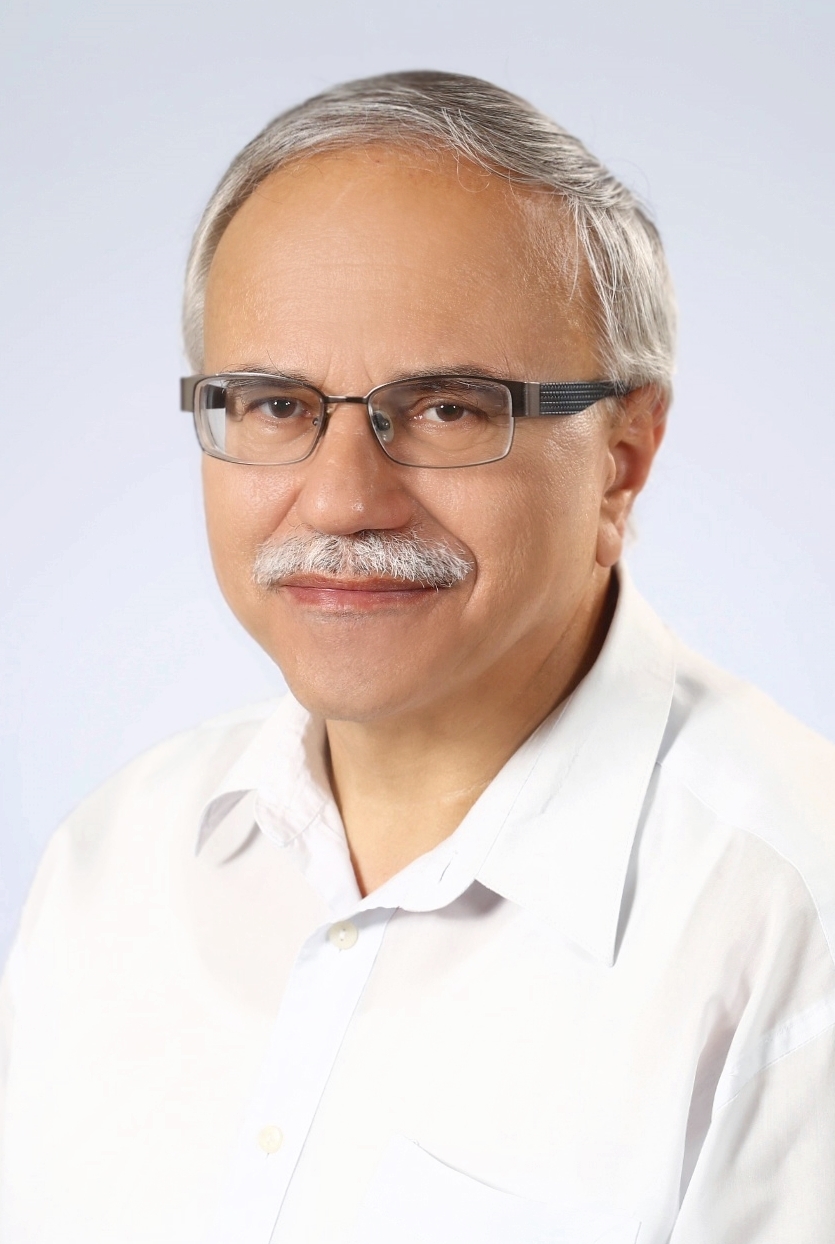prof. dr hab. Józef Stefan Pastuszka Profesor

jozef.pastuszka@polsl.pl

0000-0002-4866-6851

+48 32 237 15 40

Katedra Ochrony Powietrza ul. Konarskiego 22B, pok. 229g 44-100 Gliwice

Zainteresowania naukowe Józef Pastuszki obejmują ochronę powietrza, oraz zdrowie środowiskowe – w aspekcie prognozowania skutków zdrowotnych narażenia populacji na zanieczyszczenia powietrza. W szczególności, od wielu lat bada strukturę fizykochemiczną cząstek aerozolu atmosferycznego, oraz migrację zanieczyszczeń w środowisku. W tym zakresie uzyskał szereg interesujących wyników. Rozwija także nowe metody i metodyki ocen narażenia środowiskowego i opracowuje urządzenia pomiarowe do wyznaczania narażenia na aerozole ziarniste, włókniste i biologiczne. Jest współautorem trzech patentów dotyczących metodyk pomiarowych i redukcji emisji zanieczyszczeń powietrza.
Na Politechnice Śląskiej pracuje od roku 2004. W latach 2006 - 2016 był kierownikiem Katedry Ochrony Powietrza. Od grudnia 2020 roku jest Zastępcą Dyrektora ds. Naukowych w Centrum Ochrony Klimatu i Środowiska.
Wcześniej pracował w kilku ośrodkach badawczych w Polsce (w latach 1977-1981 w Zakładzie Fizyki Ciała Stałego PAN w Zabrzu; w latach 1981-1992 w Oddziale katowickim Instytutu Ochrony Środowiska; w latach 1992-2003 w Instytucie Medycyny Pracy i Zdrowia Środowiskowego – WHO Collaborating Centre, w Sosnowcu; w latach 2003-2006 na Wydziale Zdrowia Publicznego Śląskiej Akademii Medycznej w Bytomiu). Ponadto, pracował w USA, będąc w tym czasie na urlopie bezpłatnym w Polsce (w latach 1990-1991 jako Visiting Assistant Professor na University of Cincinnati, Medical Center, Institute of Environmental Health, Cincinnati, Ohio; w latach 1998-1999 jako Visiting Scientist na University of California, Davis, Department of Land, Air & Water Resources, Atmospheric Science Group, Davis, California).
Wybrane artykuły naukowe:
Cisowski J., Pastuszka J., Kloc K. (1980) Influence of pressure on the electrical properties of Cd3P2. Acta Physica Polonica 6, 737-744.
Kwapuliński J., Pastuszka J. (1983) The application of the mass balance equation in the estimation of beryllium and radium concentration in the lower atmosphere. The Science of the Total Environment 26, 203-207.
Kwapuliński J., Pastuszka J., Sztyler A. (1983) The application of the Roessler-Faxvog model to the analysis of the relation between visibility and pollution of the atmosphere in Katowice. The Science of the Total Environment 30, 191-195.
Pastuszka J., Kolarczyk J., Sztyler A. (1989) Preliminary studies of elemental carbon mass size distribution in Katowice. Journal of Aerosol Science 20, 1265-1268.
Nevalainen A., Pastuszka J., Liebhaber F., Willeke K. (1992) Performance of bioaerosol samplers: collection characteristics and sampler design consideration. Atmospheric Environment 26A, 531-540.
Pastuszka J., Hławiczka S., Willeke K. (1993) Particulate pollution levels in Katowice, a highly industrialized Polish city. Atmospheric Environment, 27B, 59-65.
Pastuszka J.S., Okada K. (1995) Features of atmospheric aerosol particles in Katowice, Poland. The Science of the Total Environment, 175, 179-188.
Pastuszka J.S., Kabała A., Paw U K.T. (1999) A study of fibrous aerosols in the home environment in Sosnowiec, Poland. The Science of the Total Environment 229, 131-136.
Pastuszka J.S., Paw U K.T., Lis D.O., Wlazło A., Ulfig K.. (2000) Bacterial and fungal aerosol in indoor environment in Upper Silesia, Poland. Atmospheric Environment, 34, 3833-3842.
Houthuijs D., Breugelmans O., Hoek G., Vaskövi Ė., Micháliková E., Pastuszka J.S., Jirik V., Sachelarescu S., Lolova D., Meliefste K., Uzunova E., Marinescu K., Volf J., Leeuw F. de, van de Wiel H., Fletcher T., Lebret E., Brunekreef B. (2001) PM-10 and PM-2.5 concentrations in central and eastern Europe: results from the CESAR study. Atmospheric Environment 35, 2757-2771.
Pastuszka J.S., Wawroś A., Talik E., Paw U K.T. (2003) Optical and chemical characteristics of the atmospheric aerosol in four towns in southern Poland. The Science of the Total Environment 309, 237-251.
Wawroś A., Talik E., Pastuszka J.S. (2003) Investigation of winter atmospheric aerosol particles in downtown Katowice using XPS and SEM. Microscopy and Microanalysis, 9, 349-358.
Lis D.O., Ulfig K., Wlazło A., Pastuszka J.S. (2004) Microbial air quality in offices at municipal landfills. Journal of Occupational and Environmental Hygiene 1, 62-68.
Pastuszka J.S., Talik E., Hacura A., Słoka J., Wlazło A. (2005) Chemical characterization of airborne bacteria using X-ray photoelectron spectroscopy (XPS) and Fourier transform infrared spectroscopy (FTIR). Aerobiologia (Springer), 21, 181-192.
Pastuszka J.S. (2009) Emission of airborne fibers from mechanically impacted asbestos-cement sheets and concentration of fibrous aerosol in the home environment in Upper Silesia, Poland. Journal of Hazardous Materials, 162, 1171-1177.
Pastuszka J.S., Rogula-Kozlowska W., Zajusz-Zubek E. (2010) Characterization of PM10 and PM2.5 and associated heavy metals at the crossroads and urban background site in Zabrze, Upper Silesia, Poland, during the smog episodes. Environmental Monitoring and Assessment, 168, 613-627.
Płoszaj J., Talik E., Piotrowska-Seget, Pastuszka J.S. (2012) Physical and chemical studies of bacterial bioaerosols at wastewater treatment plant using scanning electron microscopy and X-ray photoelectron spectroscopy. Solid State Phenomena, 186, 32-36.
Pastuszka J.S., Iwasiewicz P., Brągoszewska E. (2013) Preliminary testing of the new bioaerosol sampler developed for the measurements of the low and medium concentration levels of airborne bacteria and fungi. Environment Protection Engineering, 39, 129-138.
Ádám B., Molnár Á, Ádány R., Bianchi F., Bitenc K., Chereches R., Cori L., Fehr R., Kobza J., Kollarova J., Kræmer S.R., Linzalone N., Majdan M., Mekel O., Mochungong P., Otorepec P., Pastuszka J., Sierig S., Zurlyte I., Gulis G. (2014) Assessment of health risks of policies. Environmental Impact Assessment Review, 48, 47-52.
Pastuszka J.S., Rogula-Kozłowska W., Klejnowski K., Rogula-Kopiec P. (2015) Optical properties of fine particulate matter in Upper Silesia, Poland. Atmosphere, 6, 1521-1538.
Zajusz-Zubek E., Mainka A., Korban Z., Pastuszka J.S. (2015) Evaluation of highly mobile fraction of trace elements in PM10 collected in Upper Silesia (Poland): Preliminary results. Atmospheric Pollution Research 6, 961-968.
Brągoszewska E., Pastuszka J.S. (2018) Influence of meteorological factors on the level and characteristics of culturable bacteria in the air in Gliwice, Upper Silesia (Poland). Aerobiologia 34, 241-255.
Brągoszewska E., Biedroń, Kozielska B., Pastuszka J.S. (2018) Microbial indoor air quality in an office building in Gliwice, Poland: Analysis of the case study. Air Quality, Atmosphere & Health 11, 729-740.
Rogula-Kopiec P., Rogula-Kozłowska W., Pastuszka J.S., Mathews B. (2019) Air pollution of beauty salons by cosmetics from the analysis of suspended particulate matter. Environmental Chemistry Letters,17, 551-558.
Pastuszka J.S., Mucha W., Wlazło A., Lis D., Marchwińska-Wyrwał E., Mainka A. (2019) The study of the sterilization of the indoor air in hospital/clinic rooms by using the Electron Wind Generator. International Journal of Environmental Research and Public Health.16, 4935; doi:10.3390/ijerph16244935.
Mainka A., Mucha W., Pastuszka J.S., Brągoszewska E., Janoszek A. (2020) Non-commercial air purifier – the effectiveness and safety. Buildings, 10, 104; doi: 10.3390/buildings10060104.
Pastuszka J.S. Synergic Influence of Gaseous, Particulate, and Biological Pollutants on Human Health. CRC Press, Taylor & Francis Group, Boca Raton, FL, USA, 2016. (Wydawca / Edytor książki, oraz autor/współautor pięciu rozdziałów)
Prowadzone przedmioty:
- Air Pollution Engineering and Monitoring
- Air Quality Impact Assesment
- Analityczne metody instrumentalne w energetyce
- Measurements of Air Pollution
- Methods of the Reduction of the Emission of Toxic and Carcinogenic Air Pollutants In the Energy Sector
- Ocena skutków zdrowotnych na rażenia na zanieczyszczenia powietrza
- Skutki zdrowotne narażenia na zanieczyszczenia powietrza
- Skutki zdrowotne narażenia na zanieczyszczenia powietrza zewnętrznego i wewnętrznego








